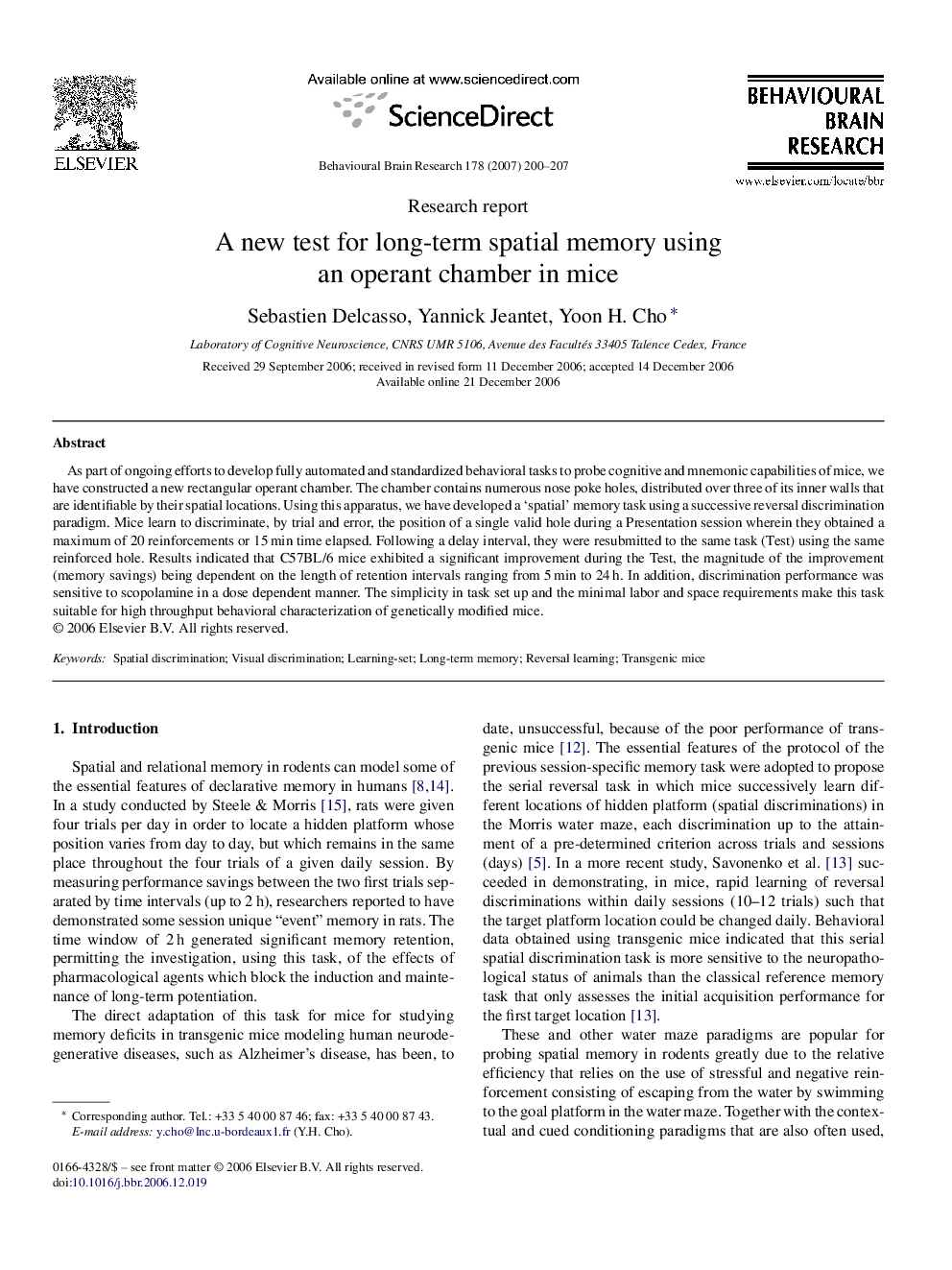| Article ID | Journal | Published Year | Pages | File Type |
|---|---|---|---|---|
| 4315691 | Behavioural Brain Research | 2007 | 8 Pages |
As part of ongoing efforts to develop fully automated and standardized behavioral tasks to probe cognitive and mnemonic capabilities of mice, we have constructed a new rectangular operant chamber. The chamber contains numerous nose poke holes, distributed over three of its inner walls that are identifiable by their spatial locations. Using this apparatus, we have developed a ‘spatial’ memory task using a successive reversal discrimination paradigm. Mice learn to discriminate, by trial and error, the position of a single valid hole during a Presentation session wherein they obtained a maximum of 20 reinforcements or 15 min time elapsed. Following a delay interval, they were resubmitted to the same task (Test) using the same reinforced hole. Results indicated that C57BL/6 mice exhibited a significant improvement during the Test, the magnitude of the improvement (memory savings) being dependent on the length of retention intervals ranging from 5 min to 24 h. In addition, discrimination performance was sensitive to scopolamine in a dose dependent manner. The simplicity in task set up and the minimal labor and space requirements make this task suitable for high throughput behavioral characterization of genetically modified mice.
